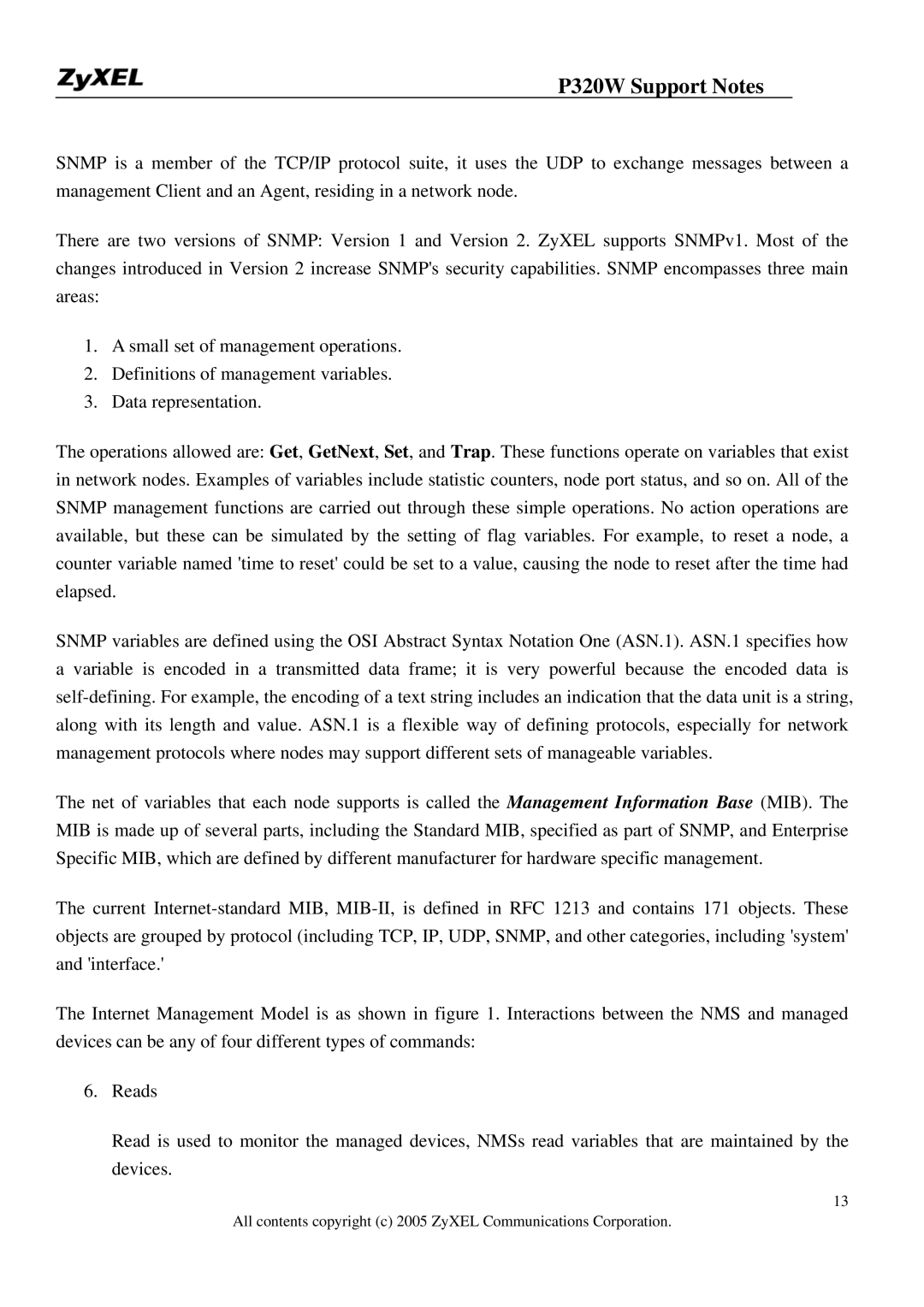P320W Support Notes
SNMP is a member of the TCP/IP protocol suite, it uses the UDP to exchange messages between a management Client and an Agent, residing in a network node.
There are two versions of SNMP: Version 1 and Version 2. ZyXEL supports SNMPv1. Most of the changes introduced in Version 2 increase SNMP's security capabilities. SNMP encompasses three main areas:
1.A small set of management operations.
2.Definitions of management variables.
3.Data representation.
The operations allowed are: Get, GetNext, Set, and Trap. These functions operate on variables that exist in network nodes. Examples of variables include statistic counters, node port status, and so on. All of the SNMP management functions are carried out through these simple operations. No action operations are available, but these can be simulated by the setting of flag variables. For example, to reset a node, a counter variable named 'time to reset' could be set to a value, causing the node to reset after the time had elapsed.
SNMP variables are defined using the OSI Abstract Syntax Notation One (ASN.1). ASN.1 specifies how a variable is encoded in a transmitted data frame; it is very powerful because the encoded data is
The net of variables that each node supports is called the Management Information Base (MIB). The MIB is made up of several parts, including the Standard MIB, specified as part of SNMP, and Enterprise Specific MIB, which are defined by different manufacturer for hardware specific management.
The current
The Internet Management Model is as shown in figure 1. Interactions between the NMS and managed devices can be any of four different types of commands:
6.Reads
Read is used to monitor the managed devices, NMSs read variables that are maintained by the devices.
13
All contents copyright (c) 2005 ZyXEL Communications Corporation.
